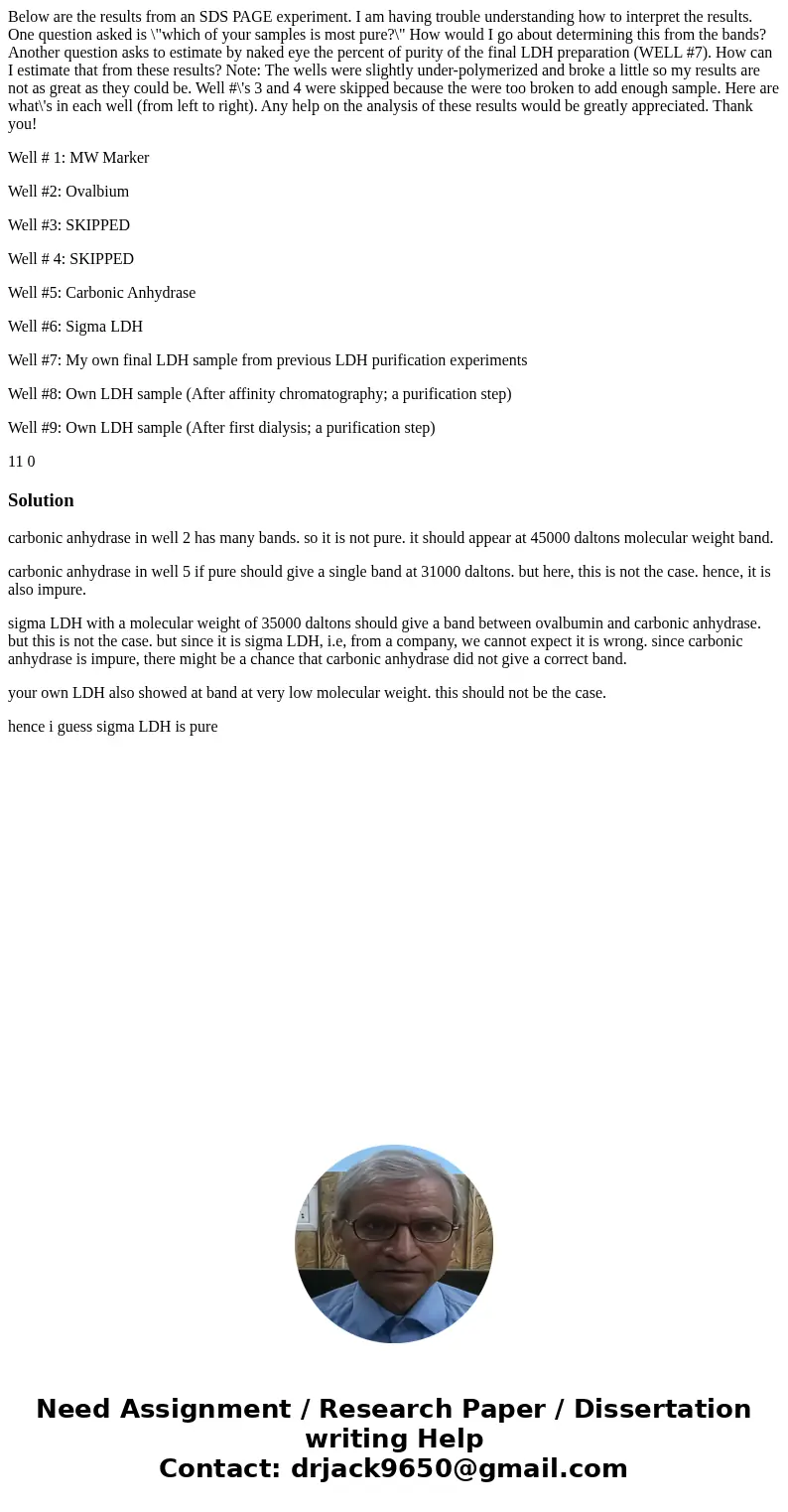Below are the results from an SDS PAGE experiment I am havin
Below are the results from an SDS PAGE experiment. I am having trouble understanding how to interpret the results. One question asked is \"which of your samples is most pure?\" How would I go about determining this from the bands? Another question asks to estimate by naked eye the percent of purity of the final LDH preparation (WELL #7). How can I estimate that from these results? Note: The wells were slightly under-polymerized and broke a little so my results are not as great as they could be. Well #\'s 3 and 4 were skipped because the were too broken to add enough sample. Here are what\'s in each well (from left to right). Any help on the analysis of these results would be greatly appreciated. Thank you!
Well # 1: MW Marker
Well #2: Ovalbium
Well #3: SKIPPED
Well # 4: SKIPPED
Well #5: Carbonic Anhydrase
Well #6: Sigma LDH
Well #7: My own final LDH sample from previous LDH purification experiments
Well #8: Own LDH sample (After affinity chromatography; a purification step)
Well #9: Own LDH sample (After first dialysis; a purification step)
11 0Solution
carbonic anhydrase in well 2 has many bands. so it is not pure. it should appear at 45000 daltons molecular weight band.
carbonic anhydrase in well 5 if pure should give a single band at 31000 daltons. but here, this is not the case. hence, it is also impure.
sigma LDH with a molecular weight of 35000 daltons should give a band between ovalbumin and carbonic anhydrase. but this is not the case. but since it is sigma LDH, i.e, from a company, we cannot expect it is wrong. since carbonic anhydrase is impure, there might be a chance that carbonic anhydrase did not give a correct band.
your own LDH also showed at band at very low molecular weight. this should not be the case.
hence i guess sigma LDH is pure

 Homework Sourse
Homework Sourse